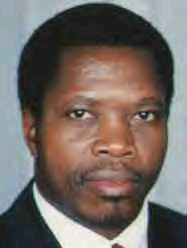 'The United States invaded Rwanda, it began in October 1990, culminated in
1994, in a coup d’ etat, we assassinated two Presidents. This was CIA work and
Paul Kagame. And this led to the invasion of the Congo and the current state of
affairs there now.' ---[2009 Interview] US
Role In Rwandan Genocide
'The United States invaded Rwanda, it began in October 1990, culminated in
1994, in a coup d’ etat, we assassinated two Presidents. This was CIA work and
Paul Kagame. And this led to the invasion of the Congo and the current state of
affairs there now.' ---[2009 Interview] US
Role In Rwandan Genocide
In fact, it is known that Museveni’s half-brother, Salim Saleh, was at the final
RPF meeting in Mulindi where the date for the shoot-down was set. The attack on
the plane killed the Rwandan president, Juvénal Habyarimana, a Hutu, the
Burundian president, Cyprien Ntaryamira, a Hutu, the Rwandan Army chief of
staff, Deogratias Nsabimana, a Hutu, and everyone else on-board.
It was the first massacre of 1994, and it was a massacre of
Hutus by the RPF. The RPF then immediately launched attacks across Kigali and
throughout the north of the country. In the sector of Kigali known as Remera,
they killed everyone living there on the night of the 6th/7th, wiped out the
Gendarme camp there, wiped out the military police camp at Kami, and launched a
major attack against Camp Kanombe, Camp Kigali and the main Gendarme camp at
Kacyiru. They slaughtered everyone in their path.
[2010] THE TRUTH ABOUT RWANDA by
Christopher Black
[2009] Rwanda and the Democratic Republic of
Congo in the Propaganda System by Edward S. Herman and David Peterson
As we have already suggested, the established perpetrator-victim line requires
suppression of the crucial fact that the April 6 shooting-down of the government
jet returning Rwanda President Juvénal Habyarimana and Burundi President Cyprian
Ntaryamira to Kigali, that killed everyone onboard, was carried out by RPF
commandos (as discussed below), and had been regarded by RPF planners as an
essential first strike in its final assault on the government. Although the mass
killings followed this assassination, with the RPF rapidly defeating
any military resistance by the successor to Habyarimana’s coalition government
and establishing its rule in Rwanda, these prime génocidaires were, and
still are today, portrayed as heroic defenders of Rwanda’s national unity
against Hutu “extremists” and the Interahamwe militia, who were the
RPF’s actual victims.
.......We also know a lot more about “who assassinated Habyarimana.” In one of
the most important, and also suppressed, stories about “The Genocide,” former
ICTR investigator Michael Hourigan developed
evidence as far back as 1996-1997, based on the testimony of three RPF
informants who claimed “direct involvement in the 1994 fatal rocket attack upon
the President’s aircraft,” and “specifically implicated the direct involvement
of [Kagame]” and other members of the RPF. But in early 1997, when Hourigan
hand-delivered his evidence to the ICTR’s chief prosecutor Louise Arbour, the
latter was “aggressive” and “hostile,” Hourigan recounts in a 2006 affidavit,
and advised him that the “investigation was at an end because in her view it was
not in [the ICTR’s] mandate.” This decision, which “astounded” Hourigan, was
rejected by former ICTR chief prosecutor Richard Goldstone, who told a Danish
newspaper that the assassination was “clearly related to the genocide,” as it
was the “trigger that started the genocide.”
Suppressing evidence of the assassination’s perpetrator has
been crucial in the West, as it seems awkward that the “trigger” for “The
Genocide” was ultimately pulled, not by the officially designated Hutu villains,
but by the Tutsi victors in this conflict, the RPF, long-supported by the United
States and by its close allies (who very possibly aided the assassins in the
shoot-down). It has also been important to suppress the fact that the first Hutu
president of Burundi, Melchior Ndadaye, had been assassinated by Tutsi officers
in his army in October 1993, an action celebrated by the RPF and arousing fears
among Rwanda’s Hutu.
A far more comprehensive eight-year investigation by the
French magistrate Jean-Louis Bruguière, who had been asked to rule on the deaths
of the three French nationals operating the government jet that was shot down in
April 1994, concluded that the assassination followed from Kagame’s rejection of
the Arusha power-sharing accords of August 1993, and that for Kagame, the
“physical elimination” of Habyarimana was therefore essential to achieving the
goal of an RPF-takeover in Rwanda.32
Bruguière issued nine arrest warrants for high-ranking RPF members close to
Kagame, and requested that the ICTR itself take up Kagame’s prosecution, as
under French law, Bruguière could not issue an arrest warrant for a head of
state.
As best we can tell, the existence of Hourigan’s evidence has
been reported only once in two U.S. newspapers (the Los Angeles Times
and Seattle Times), and never in the New York Times,
Washington Post, or Wall Street Journal; Bruguière’s findings were
mentioned in several U.S. newspapers (sixteen that we have found), including
three short items in the Washington Post, a major report in the Los
Angeles Times (reprinted in the Seattle Times), and one blurb
apiece in the New York Times and Wall Street Journal, which
totaled ninety-four words. Interestingly, the U.S. media have reported fairly
often on Bruguière’s work as a “counterterrorism” specialist in France,
including several dozen items in the New York Times, Washington
Post, and Wall Street Journal. But when we checked the U.S. media
for Bruguière’s eight-year inquiry into mass killings in Rwanda—a case where his
focus was on a U.S. client-agent as the primary villain—their interest declines
to almost zero. The propaganda system works.